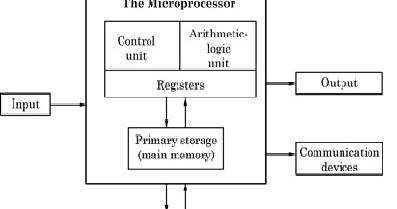

- Switching speed of a procssor Bluetooth#
- Switching speed of a procssor windows#
The decrease rate close to the origin is -12/dB per octave (two poles in the origin). The open loop gain decreases monotonically. The important characteristics to note are: Typical third-order open loop gain and phase plots are shown in Figure 2, where m is the frequency offset. Most PLL designers, especially for synthesizers where third- and fourth-order loops are common, use a different terminology, and deal mainly with the open loop gain and phase.įor a loop filter with a VCO voltage sensitivity constant (Kv), a phase-frequency detector (PFD) and a voltage-current converter or charge pump (CP) with a constant (Kp), and a passive loop filter, as shown in Figure 1, and a division ratio N, the open loop gain is given byįor a second-order loop, the open loop transfer function is given by The main second-order transfer function is given by However, a short summary of fundamentals and terminology follows:Ī second-order PLL serves as the basis for all PLL synthesizer design. The reader's familiarity with PLL theory is assumed. The purpose of this article is to briefly review switching speed theory, mechanisms, speed-up and computer aided design (CAD) to demonstrate simulation tools and explain the various options and methods available to the designer, as well as focusing on some of the challenging technical issues and design trade-offs. Speed and speed-up are standing challenges in modern wireless networks, without established and well known effective solutions. Only the combination of on-chip RF, digital, analog and digital signal processing (DSP) technologies can offer this advantage, for networking as well as for spread spectrum (frequency hopping), anti-multipath/fading technology. High resolution, fast hopping, economical (size, cost, power), single loop and integrated single chip synthesizers are but a recent possibility. When frequency hopping, the time to settle is "dead time." The difficulty is compounded since better speed cannot be obtained at the cost of compromising the spectral purity. Switching speed of a procssor Bluetooth#
Recently, switching speed has become a critical parameter in the design of PLL synthesizers, especially for modern wireless networks such as 3G, WCDMA, WLANs and Bluetooth technology. Traditionally, phase noise has been the main concern of phase locked loop (PLL) designers. Navigate to advanced tab and disable "Intel (R) SpeedStep (tm)".The phase noise and noise floor of signals is a fundamental property and a constant challenge in the design of radio and wireless networks.You can only use the arrow keys of the keyboard to navigate between the options as the mouse is not functional in this mode. Now shutdown your computer and try again.
Switching speed of a procssor windows#
If you wait too long and the Microsoft Windows appears, then continue to wait until you see the Windows desktop.As soon as you see the blue Dell logo start tapping the ‘F2’ key.You can also make disable this feature in BIOS and check if it makes any difference. So if you disable this feature you may face issues like system overheating.

For example, on the Intel Xeon processor, reducing power consumption from 1.4 volts (3.6 GHz) to 1.2 volts (2.8 GHz) can reduce the heat generated by over 30 W. As a result, DBS enables processors to generate less heat by operating at the minimum voltage and clock speed necessary to perform the required operations. Intel Speedstep technology takes advantage of a power-management technique known as demand-based switching (DBS) and is designed to dynamically modify the voltage of the CPU-and hence the processor clock speed-based on CPU load.






 0 kommentar(er)
0 kommentar(er)
